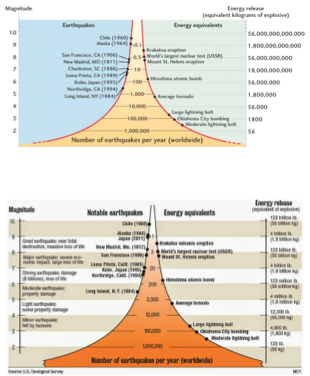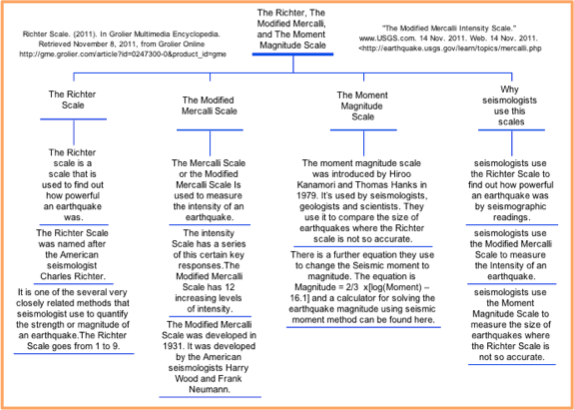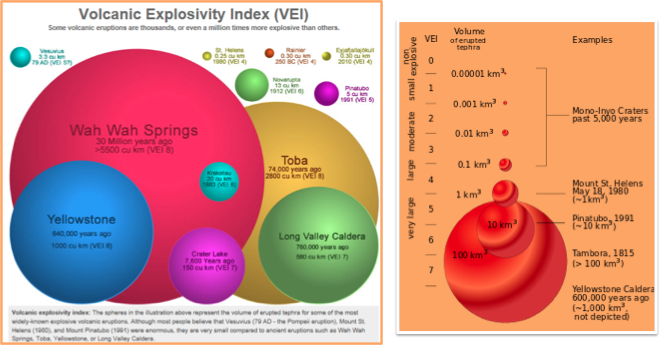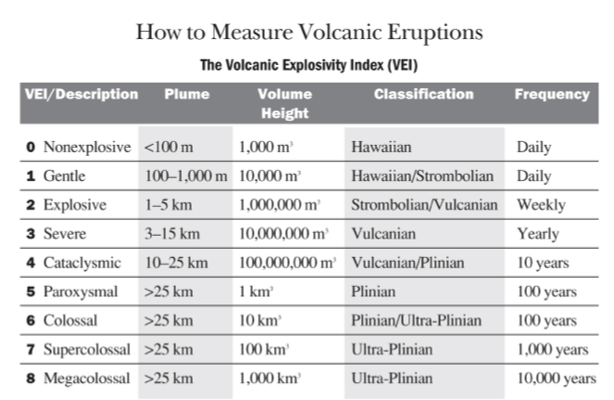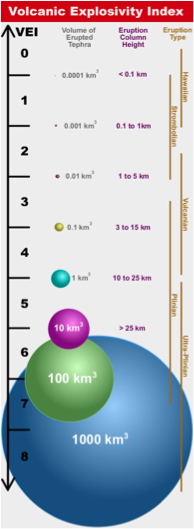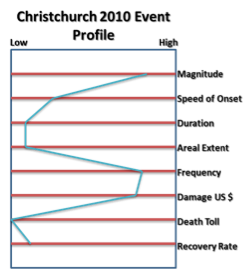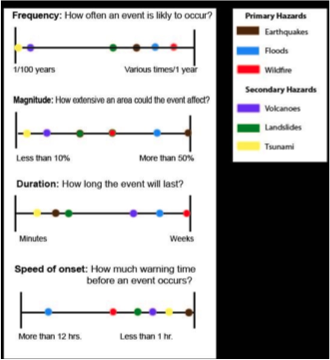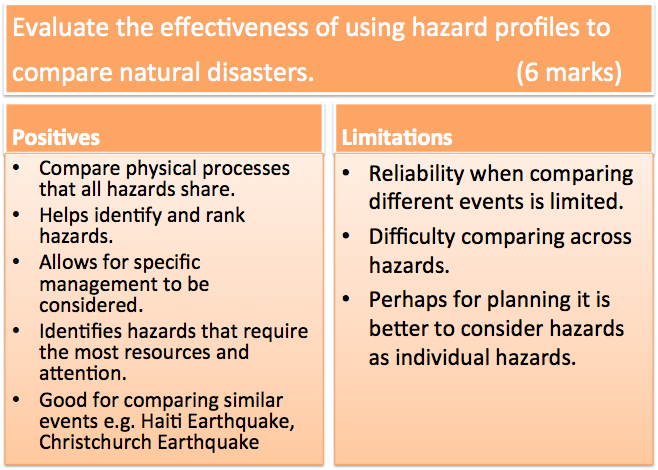Hazard Profiles
Measuring Earthquakes
The moment magnitude scale (abbreviated as MMS; denoted as MW or M) is used by seismologists to measure the size of earthquakes in terms of the energy released. It is calculated from:
-
The amount of slip on the fault.
-
The area affected.
-
An earth rigidity factor.
Measuring Volcanic Hazards
Developed by Chris Newhall and Stephen Self in 1982.
It is a relative scale that enables explosive volcanic eruptions to be compared with one another.
It can be used for both recent eruptions that scientists have witnessed and historic eruptions that happened thousands to millions of years ago.
It is determined by assessing: the volume of pyroclastic material ejected by the volcano e.g. volcanic ash, tephra, pyroclastic flows, and other types of ejecta.
Comparing
The height of the eruption column
The duration of the eruption.
Hazard Profiles
A description of the physical characteristics of a specific hazard and determination of its various descriptors including magnitude, duration, frequency, probability, and extent.
Impacts of Groups of People
Why does poverty mean vulnerability?
If an area prone to natural hazards such as flooding or earthquakes. there are various measures that can be taken to prepare. Early warning systems can be adapted; well organised evacuation procedures can be put in place; buildings can be designed and built to withstand hazards; protective barriers can be built to insure against rising water levels.
However, such projects require adequate financial resources, effective government and strong community links. A protection that developed countries across the world benefit from, but a safeguard rarely possible for poorer nations.
Each year natural disasters occur across the world and in recent years countries including Haiti, Indonesia, Pakistan, Myanmar, USA, China, India, Iran, Turkey and Chile have all suffered severely, with the loss of hundreads of thousands of lives. The highest casualties can be seen in the poorer nations of both Haiti and Indonesia.
Rapid urbanisation has led to poorer people being marginalised from safe and legal areas in many of these countries, forcing many to live in high risk locations, such as flood plains, river banks, steep slopes and reclaimed land.
In these unplanned squatter settlements, homes are not built to withstand such natural forces. Many of these settlements lack even the most basic infrastructure, such as health and fire services and fresh water and sanitation. This leaves communities extremely at risk following a natural disaster.
Women
Folloing the Asian tsunami crisis in 2004, the International Labour Organisation (ILO) argued that women are more vulnerable during disasters because they have less access to resources, are victims of gendered division of labour, and are the primary caregivers to children, the elderly and disabled.
This results in women being less able to mobilse resources for recovery, more likely to be left unemployed and overburdened with domestic responsibilities stopping them from earning an income. There is also the risk of sexual violence and exploitation including trafficking in the aftermath of a disaster.
The Elderly
As a group, the elderly are often among the most neglected in disaster relief programmes, even though they are among the most at risk. Relief charity HelpAge International reports that the vulnerability of the elderly is increasing, with the proportion of older people in developing countries set to double to 850 million by 2025.
Following a natural disaster, the elderly’s isolation from family friends and community support greatly increases their vulnerability. Up to half of the people who lost their lives in the 1995 earthquake in the Japanese city of Kobe were elderly. This was disproportionately high given that they only made up 14% of the population.
